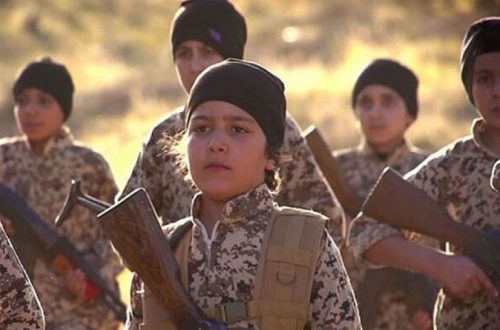This is a cross-post by Kyle Orton
Last night the United States launched a commando raid into al-Amr in Deir Ezzor in eastern Syria. According to the White House statement, Abu Sayyaf, a senior Islamic State (ISIS) commander “overseeing … illicit oil and gas operations,” was killed, and his wife, Umm Sayyaf, was taken into American custody and is being held in Iraq. The Sayyaf couple had been holding a young Yazidi woman as a slave and she has now been freed.
Unfortunately, this American raid is a tactical success amid a strategic failure—and a tactical success likely to be used to obscure the strategic failure of the U.S. anti-ISIS campaign. Even in the narrowest humanitarian terms: if the freedom of this one Yazidi girl is used to perpetuate a policy that leaves many more Yazidi girls in bondage then it is a failure.
ISIS were largely driven out of Tikrit in the first week of April after a month-long operation, and this was hailed by the Obama administration as a major success in the anti-ISIS campaign, atemplate indeed, with Iran-backed ground assets and American air support. But there is no reason to be sanguine about what happened in Tikrit.
Iran planned the Tikrit offensive without reference to Iraqi Prime Minister Haider al-Abadi. One of Iran’s proxy militias, Kataib Hizballah, a U.S.-registered terrorist organisation, threatenedAmerican planes with anti-aircraft weapons because in Iran’s telling America supports ISIS. But still the American air support was given to these militias and proved decisive. A 30,000-man force, overwhelmingly made up of Hashd al-Shabi, which is mostly composed of Iran’s proxy militias, suffered terrible casualties, up to 6,000 dead, before the U.S. airstrikes began, against a force of 400-750 ISIS jihadists.
The Hashd committed obscene atrocities as it drove into Tikrit, and in the aftermath inter alialynched a man they said was an ISIS member in front of the international press and chased the Reuters journalist, Ned Parker, who reported on it, out of Iraq. Iran’s militias now rule over aghost town in Tikrit. Not an ideal outcome, and not a surprise either.
In August 2014, America provided airstrikes in support of Iran’s most powerful proxy militia, the Badr Corp, as it drove ISIS out of Amerli, a Shi’a Turkoman town. After Badr took over Amerli, itrampaged: emptying the town of Sunni inhabitants and razing surrounding villages in an attempt to alter the demographic balance, complete with abductions and the torture of children.
Above all of this is the problem that America’s alignment with Iran in Iraq is self-defeating: it was the sectarian persecution by the Iran-aligned government in Baghdad that put the Sunni insurgency back online and made ISIS an acceptable vanguard to many Sunnis who had rejected it only a couple of years before. As Iran’s power grows in Iraq, so does ISIS’.
Do read the rest of Kyle’s post here


